Signifer
Евсеенков А.С.
A signifer (from Latin signum — "sign," and ferre — "to carry") was a type of standard-bearer in the Roman army responsible for carrying the emblem of a cohort, maniple, or century — known as the signum. Each century in a legion had its own signifer, making a total of 59 signifers in a legion. The signifer of a cohort was the signifer of its first century. The signifer of the first century of the first cohort, known as the aquilifer, carried the aquila (eagle standard), which was sometimes considered the highest distinction of the legion itself.
The signifer of a century also served as a treasurer, responsible for paying soldiers, safeguarding their savings, and managing the financial resources of the unit.
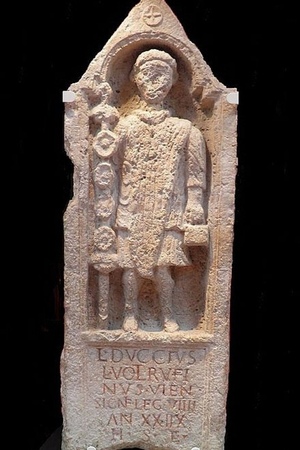 Tombstone of Lucius Duccius Rufinus, signifer of the 9th Legion. Yorkshire Museum. 2nd century CE.
Tombstone of Lucius Duccius Rufinus, signifer of the 9th Legion. Yorkshire Museum. 2nd century CE.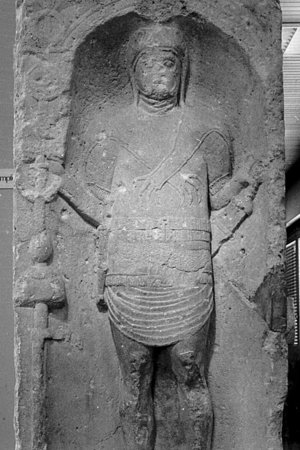 Tombstone of the standard-bearer Pinatius. Rheinisches Landesmuseum, Bonn, Germany. 1st century CE.
Tombstone of the standard-bearer Pinatius. Rheinisches Landesmuseum, Bonn, Germany. 1st century CE.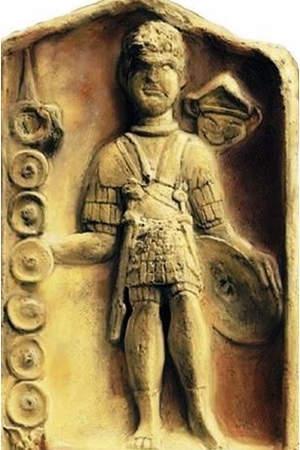 Tombstone of Quintus Lucius Faustus, signifer. Mainz. First half of the 1st century CE.
Tombstone of Quintus Lucius Faustus, signifer. Mainz. First half of the 1st century CE.
The signum was a long wooden staff adorned with various decorations, often including disc-shaped "medals" similar to phalerae, as well as symbols like a crescent or wreath. These distinctions were awards given to the corresponding unit. Additionally, a plaque with the name and number of the unit was attached to the staff. The top of the staff featured a spearhead or a three-dimensional figure depicting an open hand in a circular wreath — manus (Latin manus). This symbolized the oath of loyalty sworn by the legionaries. It is believed that signums with a hand were used by maniples, while those with a spearhead were carried by cohorts and centuries.
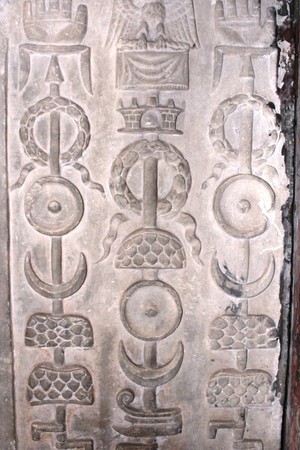 Roman standards from a funerary or ceremonial monument in Rome (Chiesa di San Marcello al Corso, Rome). 3rd century CE.
Roman standards from a funerary or ceremonial monument in Rome (Chiesa di San Marcello al Corso, Rome). 3rd century CE.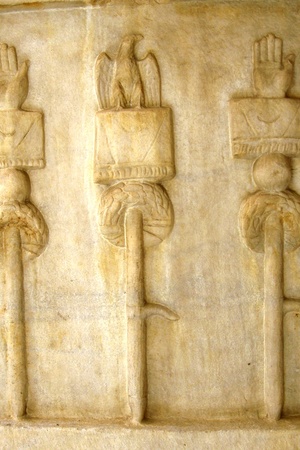 Signa from the Matteotti sarcophagus. 150-170 CE.
Signa from the Matteotti sarcophagus. 150-170 CE.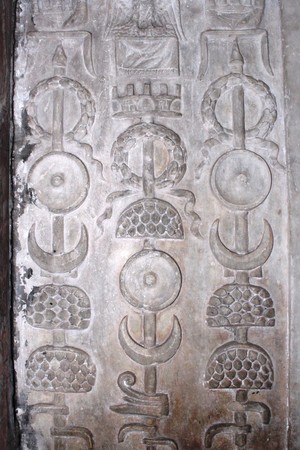 Roman standards from a funerary or ceremonial monument in Rome (Chiesa di San Marcello al Corso, Rome). 3rd century CE.
Roman standards from a funerary or ceremonial monument in Rome (Chiesa di San Marcello al Corso, Rome). 3rd century CE.
The main distinction of the signifer from other standard-bearers in the legion was the bear or wolf skin worn over the helmet, with the paws tied around the neck. The face could be covered with a mask. The signifer was armed with a gladius and a pugio. For protection, signifers wore a lorica hamata or squamata, and a small round shield called a parma, which was carried on a strap at the side.
Related topics
Legion Banner Group, Aquilifer, Vexillary, Imaginifer, Disguise
Gallery
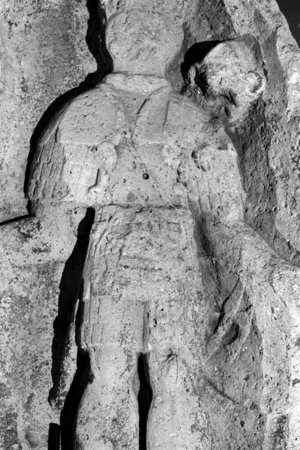 Tombstone of the signifer C. Valerius Secundus from Legio XIV Gemina. Mainz. 1st-2nd century CE.
Tombstone of the signifer C. Valerius Secundus from Legio XIV Gemina. Mainz. 1st-2nd century CE.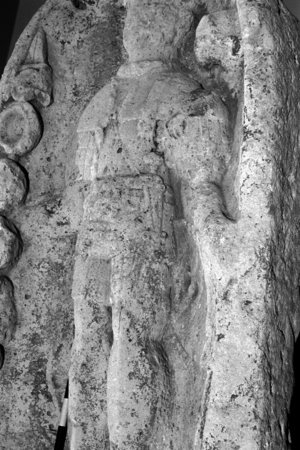 Tombstone of the signifer C. Valerius Secundus from Legio XIV Gemina. Mainz. 1st-2nd century CE.
Tombstone of the signifer C. Valerius Secundus from Legio XIV Gemina. Mainz. 1st-2nd century CE.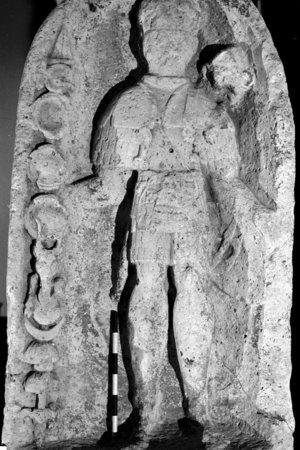 Tombstone of the signifer C. Valerius Secundus from Legio XIV Gemina. Mainz. 1st-2nd century CE.
Tombstone of the signifer C. Valerius Secundus from Legio XIV Gemina. Mainz. 1st-2nd century CE.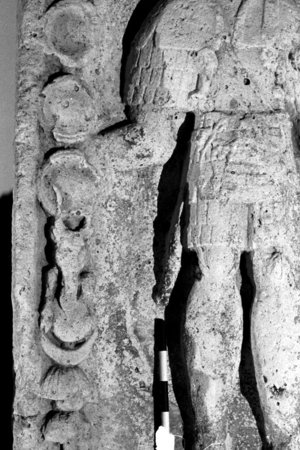 Tombstone of the signifer C. Valerius Secundus from Legio XIV Gemina. Mainz. 1st-2nd century CE.
Tombstone of the signifer C. Valerius Secundus from Legio XIV Gemina. Mainz. 1st-2nd century CE.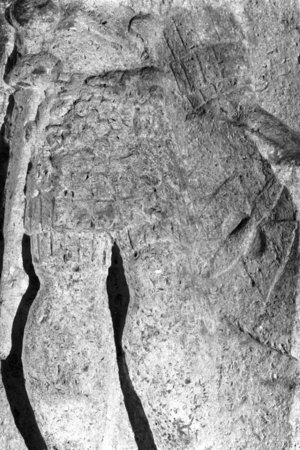 Tombstone of the signifer C. Valerius Secundus from Legio XIV Gemina. Mainz. 1st-2nd century CE.
Tombstone of the signifer C. Valerius Secundus from Legio XIV Gemina. Mainz. 1st-2nd century CE.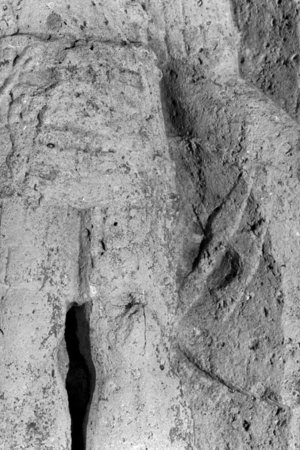 Tombstone of the signifer C. Valerius Secundus from Legio XIV Gemina. Mainz. 1st-2nd century CE.
Tombstone of the signifer C. Valerius Secundus from Legio XIV Gemina. Mainz. 1st-2nd century CE.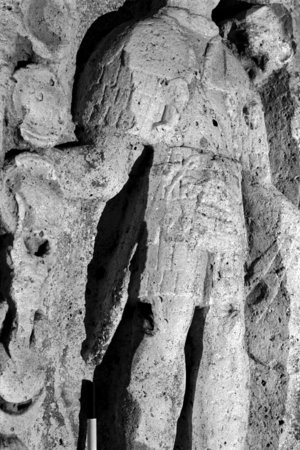 Tombstone of the signifer C. Valerius Secundus from Legio XIV Gemina. Mainz. 1st-2nd century CE.
Tombstone of the signifer C. Valerius Secundus from Legio XIV Gemina. Mainz. 1st-2nd century CE.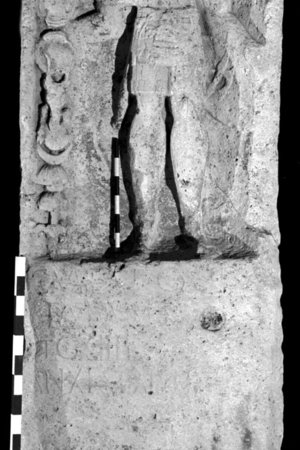 Tombstone of the signifer C. Valerius Secundus from Legio XIV Gemina. Mainz. 1st-2nd century CE.
Tombstone of the signifer C. Valerius Secundus from Legio XIV Gemina. Mainz. 1st-2nd century CE.
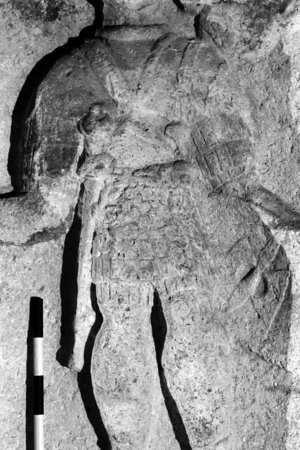 Tombstone of the signifer C. Valerius Secundus from Legio XIV Gemina. Mainz. 1st-2nd century CE.
Tombstone of the signifer C. Valerius Secundus from Legio XIV Gemina. Mainz. 1st-2nd century CE.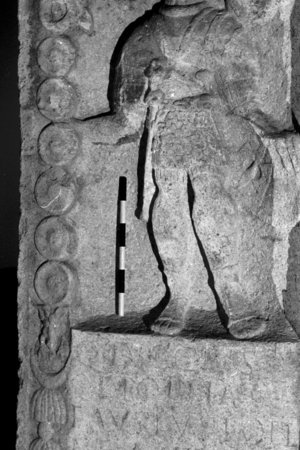 Tombstone of the signifer C. Valerius Secundus from Legio XIV Gemina. Mainz. 1st-2nd century CE.
Tombstone of the signifer C. Valerius Secundus from Legio XIV Gemina. Mainz. 1st-2nd century CE.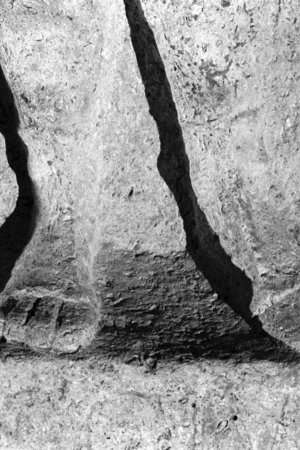 Tombstone of the signifer C. Valerius Secundus from Legio XIV Gemina. Mainz. 1st-2nd century CE.
Tombstone of the signifer C. Valerius Secundus from Legio XIV Gemina. Mainz. 1st-2nd century CE.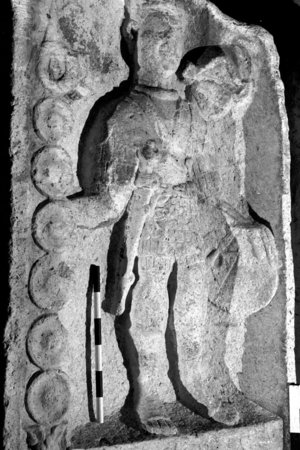 Tombstone of the signifer C. Valerius Secundus from Legio XIV Gemina. Mainz. 1st-2nd century CE.
Tombstone of the signifer C. Valerius Secundus from Legio XIV Gemina. Mainz. 1st-2nd century CE. Tombstone of the signifer C. Valerius Secundus from Legio XIV Gemina. Mainz. 1st-2nd century CE.
Tombstone of the signifer C. Valerius Secundus from Legio XIV Gemina. Mainz. 1st-2nd century CE.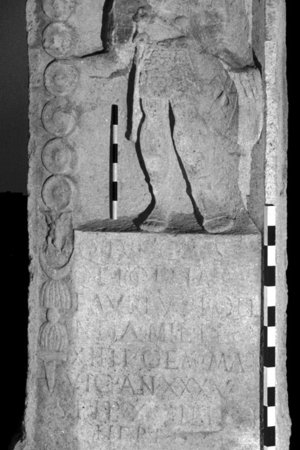 Tombstone of the signifer C. Valerius Secundus from Legio XIV Gemina. Mainz. 1st-2nd century CE.
Tombstone of the signifer C. Valerius Secundus from Legio XIV Gemina. Mainz. 1st-2nd century CE.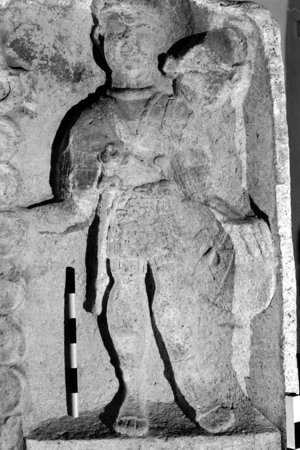 Tombstone of the signifer C. Valerius Secundus from Legio XIV Gemina. Mainz. 1st-2nd century CE.
Tombstone of the signifer C. Valerius Secundus from Legio XIV Gemina. Mainz. 1st-2nd century CE.
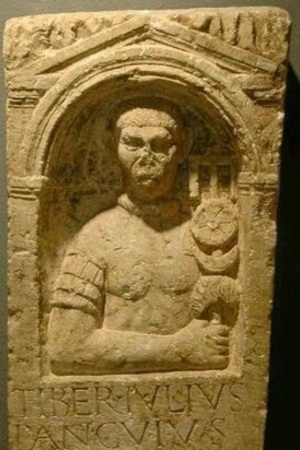 Tombstone of the signifer Tiberius Julius Pancuius. Clemens-Sels-Museum, Neuss. 20-50 CE.
Tombstone of the signifer Tiberius Julius Pancuius. Clemens-Sels-Museum, Neuss. 20-50 CE.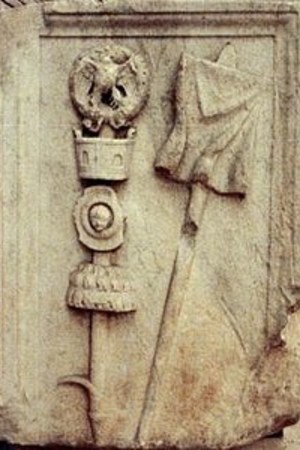 Relief with signa. Capitoline Museums, Rome. Second half of the 1st century CE.
Relief with signa. Capitoline Museums, Rome. Second half of the 1st century CE.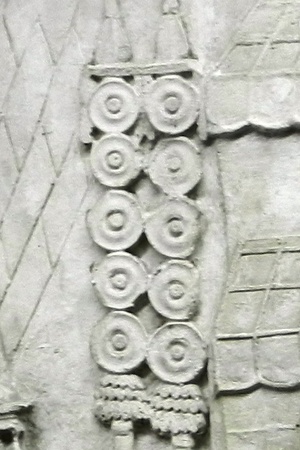 Signa from Trajan's Column. Early 2nd century CE.
Signa from Trajan's Column. Early 2nd century CE.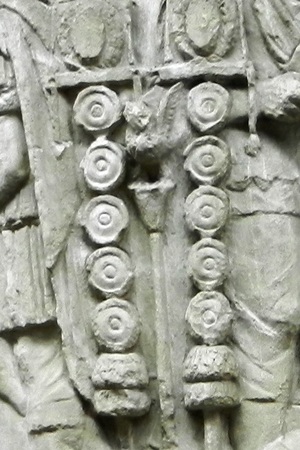 Signa from Trajan's Column. Early 2nd century CE.
Signa from Trajan's Column. Early 2nd century CE.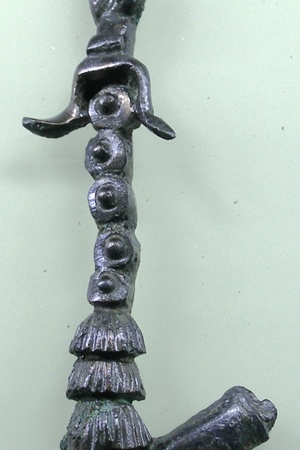 Fragment of a bronze statue of a signifer. 1st-3rd century CE.
Fragment of a bronze statue of a signifer. 1st-3rd century CE.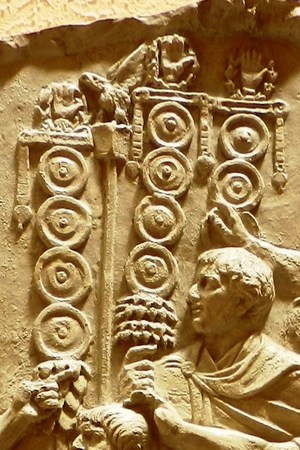 Signa from Trajan's Column. Early 2nd century CE.
Signa from Trajan's Column. Early 2nd century CE.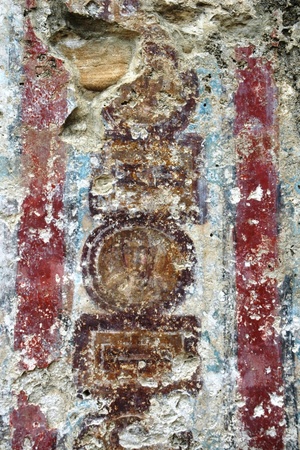 Fresco depicting signa. Villa "Casale, Piazza Armerina." 3rd-4th century CE.
Fresco depicting signa. Villa "Casale, Piazza Armerina." 3rd-4th century CE.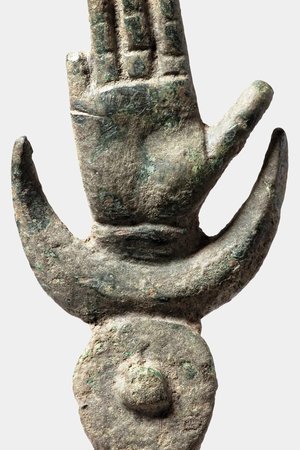 Bronze signum with hand motif. Auction in Munich. 2nd-3rd century CE.
Bronze signum with hand motif. Auction in Munich. 2nd-3rd century CE.
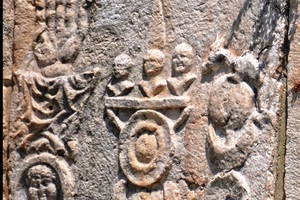 Stele of Marcus Paccius Marcellus. 1st century CE.
Stele of Marcus Paccius Marcellus. 1st century CE.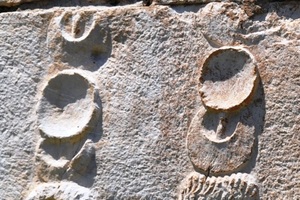 Stele of Marcus Paccius Marcellus. 1st century CE.
Stele of Marcus Paccius Marcellus. 1st century CE.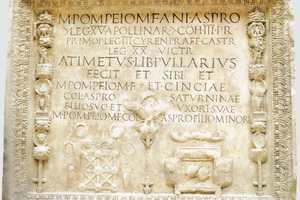 Stele of M. Pompeius Aspro, centurion and later camp prefect, who served in Legio XV Apollinares, Cohors III Praetoria, Legio III Cyrenaica, Legio XX Valeria Victrix. 1st-3rd century CE.
Stele of M. Pompeius Aspro, centurion and later camp prefect, who served in Legio XV Apollinares, Cohors III Praetoria, Legio III Cyrenaica, Legio XX Valeria Victrix. 1st-3rd century CE.

 Gallery
Gallery








































